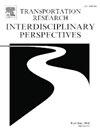我们是否应该将公交乘客减少的原因归咎于 COVID-19,或者它只是一剂兴奋剂?
IF 3.9
Q2 TRANSPORTATION
Transportation Research Interdisciplinary Perspectives
Pub Date : 2025-04-05
DOI:10.1016/j.trip.2025.101397
引用次数: 0
摘要
在2019冠状病毒病大流行期间,公共交通客流量大幅下降,尽管病毒已大幅消退,人们大多已恢复正常生活,但目前尚未反弹。这表明,这种下降的原因不仅仅是健康问题和在家工作安排。本研究着眼于大流行前的公交用户,旨在了解公交客流量下降的最具影响力的行为和态度原因。利用来自美国太平洋西北地区的调查数据集,我们进行了两项分析:结构方程建模和用户聚类(基于态度)结合统计测试。这两项分析的核心是人们对三个问题的态度/看法:与陌生人共乘、在线活动与面对面活动、流行病健康风险。结果显示,虽然这三个因素都在大流行后减少交通工具使用频率方面发挥了作用,但不愿拼车是唯一直接和重要的因素,其程度是与大流行相关的健康担忧/恐惧的三倍。研究发现,后者通过影响拼车意愿和在线活动偏好,对减少公交客流量产生了相当间接的影响。这意味着,仅仅注重安全和保护措施不会使过境客流量恢复到大流行前的水平。投资可以直接用于提高乘客的安全性和舒适度,并提供折扣或降低票价。此外,鉴于在家工作活动的扩大,建议过境机构将其路线规划和服务销售的重点从工作旅行转移到其他旅行目的。本文章由计算机程序翻译,如有差异,请以英文原文为准。
Should we blame COVID-19 for the decline in transit ridership, or was it merely a stimulant?
Public transit ridership significantly declined during the COVID-19 pandemic and has not yet rebounded, even though the virus substantially subsided and people have mostly returned to their normal lives. This suggests that there are reasons for this drop that go beyond health concerns and work-from-home arrangements. Focusing on pre-pandemic transit users, this study aims at understanding the most influential behavioral and attitudinal reasons for the transit ridership decline. Exploiting a survey dataset from the U.S. Pacific Northwest region, we performed two analyses: structural equation modeling, and user clustering (based on attitudes) combined with statistical tests. The core of both analyses was people’s attitudes/perceptions toward three matters: sharing rides with strangers, doing activities online vs. in person, and pandemic health risks. The results showed that while those three all play a role in post-pandemic reduced transit use frequency, the reluctance to share rides is the only direct and significant factor and that its magnitude is three times larger than the health concerns/fears associated with the pandemic. The latter was found to have rather an indirect effect on reducing transit ridership, through its impact on both ridesharing reluctance and online activities preference. This implies that focusing solely on safety and protective measures will not restore transit ridership to its pre-pandemic levels. Investments may be directed toward improving rider security and comfort and offering discounts or reduced fares. Moreover, given the extended work-from-home activities, it is recommended that transit agencies shift their focus in route planning and service marketing from work trips to other trip purposes.
求助全文
通过发布文献求助,成功后即可免费获取论文全文。
去求助
来源期刊

Transportation Research Interdisciplinary Perspectives
Engineering-Automotive Engineering
CiteScore
12.90
自引率
0.00%
发文量
185
审稿时长
22 weeks
 求助内容:
求助内容: 应助结果提醒方式:
应助结果提醒方式:


